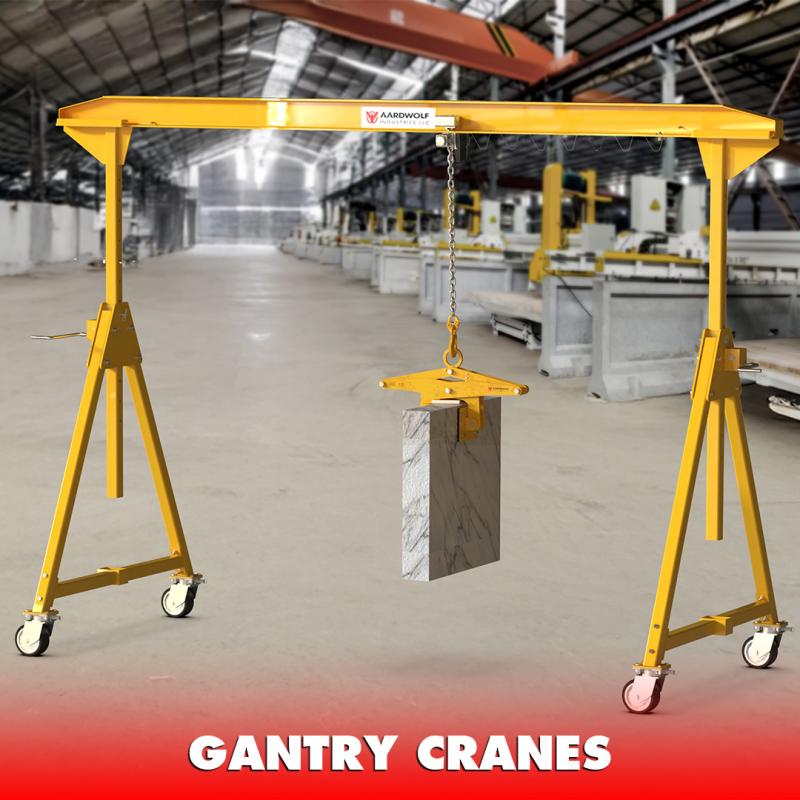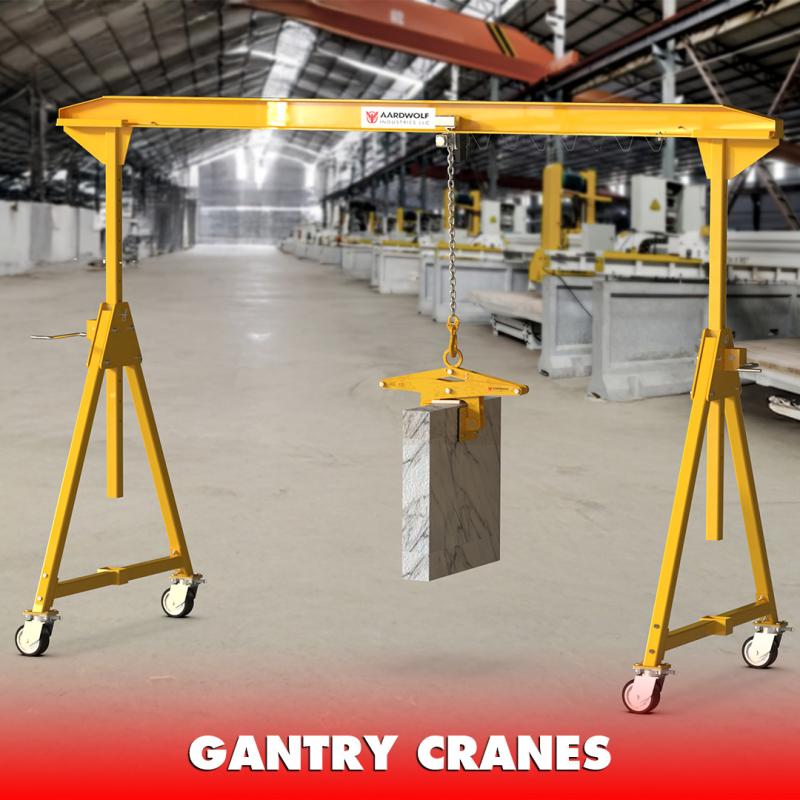



A Gantry Crane is a type of crane featuring a horizontal beam supported by two legs that move along a track or wheels. Unlike overhead cranes, gantry cranes are self-supporting, eliminating the need for permanent building support structures. These cranes are extensively used for handling material in numerous industrial settings.
Container gantry cranes, also known as ship-to-shore cranes, are specially designed for loading and unloading shipping containers at ports. These robust cranes have high lifting capacities and long outreach capabilities to handle containers efficiently and quickly. Container gantry cranes significantly contribute to the efficiency and productivity of harbors worldwide.
Portable gantry cranes are lightweight, easy to assemble, and mobile, making them ideal for various indoor and outdoor applications. They can be quickly relocated from one workstation to another, providing immense flexibility for handling material. Portable gantry cranes are commonly used in workshops, warehouses, and small manufacturing facilities where mobility is essential.
Mobile gantry cranes provide exceptional flexibility due to their ability to move on wheels or rails. These cranes are particularly beneficial for facilities with limited space or changing layout requirements. Mobile gantry cranes are widely used in maintenance operations, assembly lines, and industries that require frequent relocation of heavy loads.
Aluminium gantry cranes are exceptionally lightweight and corrosion-resistant, making them ideal for cleanroom environments, laboratories, food processing, and chemical handling industries. Their portability and durability allow for efficient material handling in specialized environments where hygiene and cleanliness are critical.
Adjustable gantry cranes provide versatility through their adjustable height and width features. Businesses needing adaptability for diverse tasks often choose adjustable gantry cranes to accommodate varying sizes and weights of loads. They are perfect for companies that require handling different materials regularly, ensuring optimal safety and productivity.
"Gantry crane harbor freight" typically refers to affordable and practical cranes available through retailers or suppliers like Harbor Freight Tools. These cranes are commonly used by smaller businesses, hobbyists, and workshops looking for reliable and budget-friendly solutions for material handling tasks.
Understanding the differences between overhead and gantry cranes is crucial for selecting the right crane for specific applications. The article "What Is the Difference Between Overhead and Gantry Crane?" explains the key distinctions:
Support Structure: Overhead cranes are mounted onto a fixed runway structure within buildings, while gantry cranes stand independently on legs.
Mobility: Gantry cranes typically feature wheels or casters, allowing mobility across floors, whereas overhead cranes remain stationary, moving only along fixed paths.
Installation Cost: Gantry cranes usually incur lower installation costs since they do not require substantial building modifications compared to overhead cranes.
Apart from gantry cranes, other crucial material handling equipment plays a significant role in industrial and logistical operations. One important complementary system is the jib crane.
Jib cranes are a type of crane featuring a horizontal jib or boom that supports a moveable hoist. They are ideal for specific workstation tasks, providing precise and localized lifting solutions. Jib cranes efficiently complement gantry cranes by handling lighter loads or specific tasks within designated work areas, offering a highly efficient material handling solution.
Selecting the right gantry crane variant significantly impacts operational efficiency, safety, and cost-effectiveness. Benefits include:
Improved Productivity: Efficient handling of materials reduces operational downtime and enhances overall productivity.
Enhanced Safety: Proper crane selection ensures compliance with safety standards, reducing the risk of accidents and injuries.
Cost Efficiency: Optimal crane choice minimizes unnecessary expenditures related to maintenance, repairs, and operational delays.
Choosing the right gantry crane involves assessing several critical factors:
Consider the maximum weight and nature of materials handled to determine the appropriate lifting capacity and crane type.
Evaluate workspace constraints and whether the crane must be mobile or stationary to facilitate seamless workflow.
Assess environmental conditions like humidity, temperature, and exposure to chemicals to choose suitable crane materials such as aluminium or steel.
Factor in initial investment, maintenance costs, and operational expenses to select a crane that offers the best cost-benefit ratio.
Understanding the different variants of gantry cranes enables businesses to select the most effective solutions tailored to their specific material handling needs. Whether opting for portable, mobile, aluminium, or container gantry cranes, the right choice significantly enhances operational productivity, safety, and efficiency. Complementing gantry cranes with equipment like jib cranes further strengthens comprehensive material handling strategies, ultimately driving greater operational success.
Sign up to receive the latest info on new Aardwolf products, special offers and more.
By signing up you agree to receive emails from Aardwolf with news, special offers, promotions and other information. You can unsubscribe at any time.